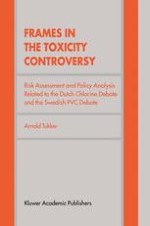1999 | Buch
Über dieses Buch
Preface When you write a book like this after ten years' working as an environmental specialist, you end up with something that reflects your career. Of course, when I started working at the Ministry of the Environment in the Netherlands, I could not foresee that I would now be at TNO, nor that I would have performed research into chlorine, PVC, waste, etc. , that would come to form the basis for this book. But step by step, with some coincidence and with the support of several people - who were probably unaware of the crucial role that, with hindsight, they played - I arrived at a position where I could start to consider this enterprise. At this point I shall try something dangerous - thanking a few of those people who gave that support. At the same time, it is obvious that I cannot mention them all. I hope that those whom I do not mention will forgive me. A first, crucial moment in this sequence of events came quite soon after I joined TNO in 1990. Just a few weeks later, all the senior staff in my section decided to leave in order to set up their own company. I decided to stay at TNO. As a consequence, I had to manage it on my own.
Anzeige
